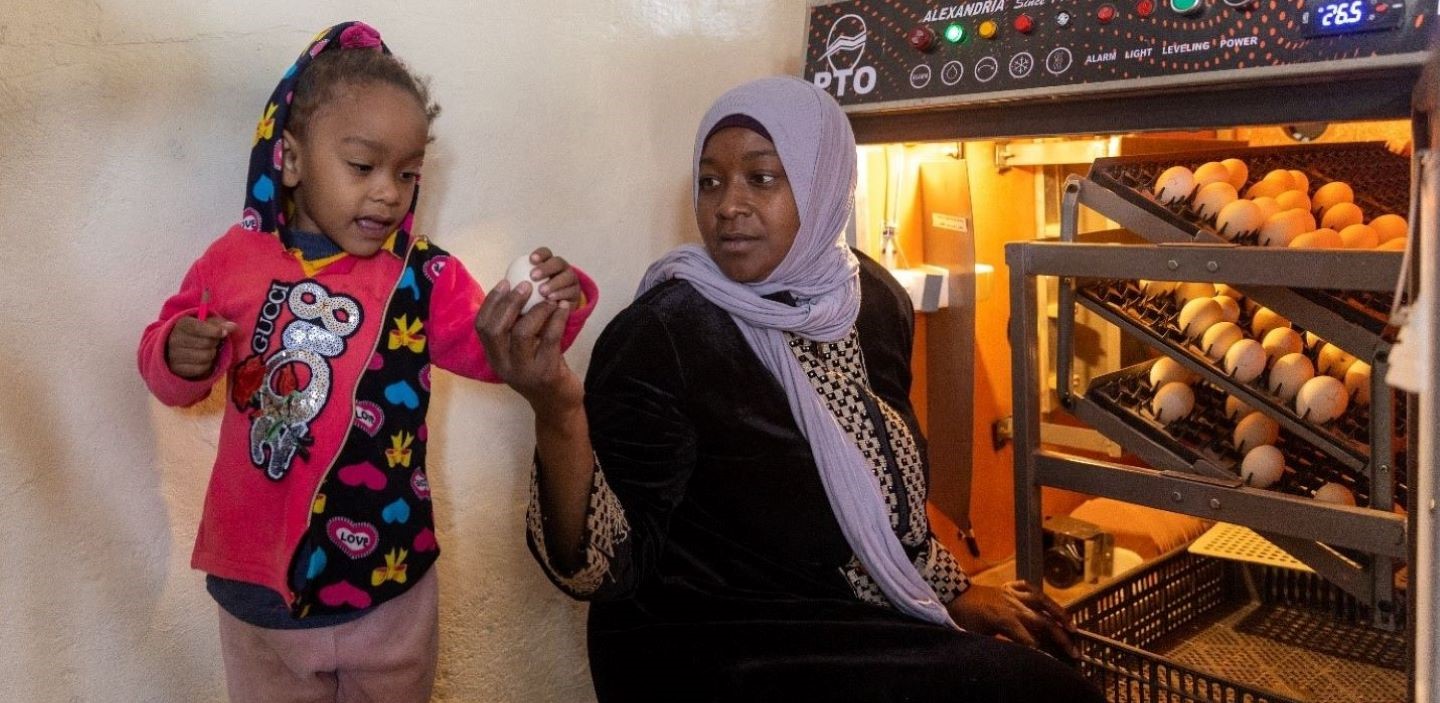From bunnies to buffalo, livestock give rural women a living
IFAD Asset Request Portlet
Asset Publisher
From bunnies to buffalo, livestock give rural women a living
Estimated reading time: 3 minutesFor many rural women, tending to livestock is a fast track to empowerment. Yet many struggle to access essentials, like training, finance and land, due to economic and social restrictions, among other reasons.
But with support from IFAD, rural women are caring for a myriad of creatures while earning a living and empowering themselves.
Cashing in with chickens

Rural life can be particularly gruelling for those who struggle with the physical rigours of farming.
In Jordan, Nadia Hammad suffers from a chronic disease while her husband has a debilitating illness which prevents him from working. This makes providing for their five children a challenge.
But Nadia has found a way to get by. With a grant from the IFAD-funded SIGHT project, she set up an egg hatchery and started breeding chickens. For the first six months, she also received small sums from SIGHT which enabled her to buy eggs to hatch and feed for the new-born chicks.
Nadia sells chickens to her neighbours and at a nearby poultry market. For the first time in a long time, she no longer feels limited. “It makes me happy that I can provide an income for my children and that I am doing something.”
Remarkable rabbits

Despite often being responsible for the family livestock, rural women in Zambia rarely get to decide how the financial returns are spent. This is now changing with the help of an unlikely ally: rabbits.
Rabbits are easy and cheap to rear and sell, giving a steady income and a reliable source of nutritious meat for the household. Working with the IFAD-funded E-SLIP programme, the Zambian Ministry of Fisheries and Livestock provided 400 women with ten rabbits each: two male and eight female. As these notoriously fast breeders multiply, women pass on the offspring to other women in the community.
For Violet Banda, a mother-of-six and head of the local women’s group, her rabbits mean she can now afford to feed her family three meals a day instead of just one.
Longing for llamas

Growing up in the high-plateau region of the Bolivian Andes, Andrea Choque Paco was always taught that, as a woman, her role was to take care of the home. For years, she prepared for that – until fate took her another way.
As the only child in her family to leave the city she had migrated to and return to her impoverished rural community, Andrea became her father’s heir, despite her gender.
Having identified and purchased llamas through the Pro-Camélidos project, Andrea and her fellow villagers walked 400 km over the Andes to the city of Oruro to collect them. Back in their village, they cross-bred the new large llamas with hardy but small local ones.
It’s been three years since the start of this epic journey and Andrea’s herd has grown from 12 to 22 large and healthy llamas. Where once she earned US$116 per llama, today a single animal goes for up to US$188.
“I am single, but I never needed a man to help me,” says Andrea. “I alone made the bricks for my fence and my house. And, now, I have shown that I can do men and women’s tasks alike.”
Buffalo blowout

When the COVID-19 pandemic hit Nepal, Sita Kumari Khamcha’s family was pushed into debt. Yet, she now stands proudly in her buffalo enclosure, surrounded by the animals that have helped her put her family back on the road to prosperity.
In 2022, Sita Kumari signed up for training in rearing livestock through the IFAD-funded Agriculture Sector Development Programme. With credit from the programme, she invested in two buffaloes.
Today, her herd has grown, with eight buffaloes, three cows and a calf. She milks the cows twice a day and sells it to a local cooperative, earning up to US$1,000 a month. With the money, she has cleared the family’s debt and bought a car so her husband can earn a living as a driver.
“Even if I can’t read, now I can earn respect as a successful farmer,” says Sita Kumari.
Despite the many challenges they face, women all over the world are lifting themselves out of poverty, providing for their families and thriving – thanks to their loyal livestock.
Publication date: 11 July 2023